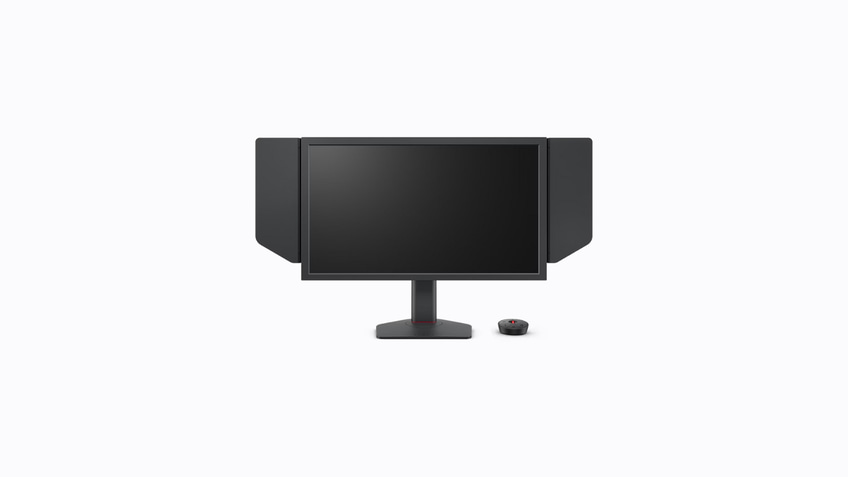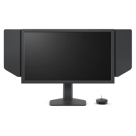Introduction
ZOWIE monitors rule the competitive gaming market. Well over 50% of pros use a ZOWIE monitor to perform on. The reason for that? They’re, quite simply, really good. Their products are laser-focused on gaming and make no compromises on that front, and that’s exactly what you need if you make a living playing games. In this review, we’ll take a look at their latest effort, a 600Hz boundary-pushing panel kitted out with their DyAc 2 technology. Read our full ZOWIE XL2586X+ review to find out if it’s a worthy new addition to their lineup.
At A Glance
ZOWIE XL2586X+
Used by 19 players ()The ZOWIE XL2586X+ is a statement product. It doesn’t care about wide appeal. It’s built for one thing: pure, no-compromise competitive performance. And in that regard, it absolutely delivers.
Pros
- Gaming performance is best-in-class
- Adjustable in all the right ways
- DyAc 2 feels great on this monitor
- Small, but very reliable stand
Cons
- Viewing angles aren’t good
- Thick bezels
- 600Hz 1080p panel is overkill for all but the most hardcore of gamers
Specs
| Size | 24″ |
|---|---|
| Resolution | 1920×1080 |
| Aspect Ratio | 16:9 |
| Refresh Rate | 600 |
| G-Sync | No |
| FreeSync | No |
| Panel Tech | TN |
First Impressions
ZOWIE monitors have a design that I really like. The stand has a small footprint, comes with markings, and works very smoothly. The overall presentation is also pleasing to me. It’s very subtle, and in general it’s not a monitor that screams ‘I am a gaming product’.
The only design aspect that I don’t love are the bezels. These have gotten even bigger compared to earlier models, and those weren’t small to begin with. I’ll speak more about these in the next section though.
Inside the box of the XL2586X+, you will find everything that you need. This includes:
- A DP cable
- An HDMI cable
- Privacy shields
- An S-Switch
- User documentation
- A Power cable
- The monitor itself
- The monitor stand and base
I like that two cable options are included, meaning that you can get to gaming without any worries.
Something that’s important to note when considering this monitor and reading this review is that it’s a product that’s aimed towards a very specific audience: hardcore competitive gamers. It’s a 1080p 600Hz monitor with a TN panel, so it’s a very niche product. If you are looking for a compromise between visuals and gaming performance, look elsewhere, as this monitor goes all-in on gaming performance.
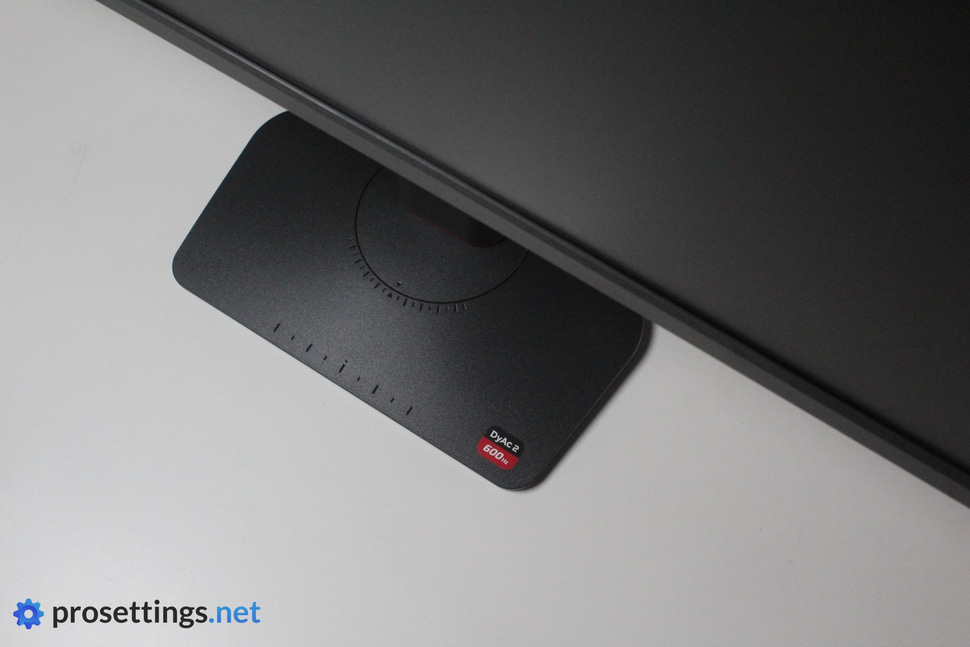
Build and Operation
Design
I like desk space, so at my main desk I use two monitor arms. However, with these ZOWIE monitors that’s arguably not even necessary.
The stand has a very small footprint and stays stable even when I’m frantically performing a bunch of low-sensitivity swipes.
On the stand, you see a bunch of markings that will help you set up your monitor in exactly the same way each and every time. This might sound like overkill, but given the fact that many pro gamers use rulers to set up their desk at tournaments, it’s a very logical and welcome addition. The markings are subtle to boot, so if you have no use for them then they won’t get in the way.
Something that can get in your way are the bezels. These have always been on the larger side, but they’ve grown even further. These bezels are the first indicator that this monitor is completely focused on gaming and nothing else.
According to ZOWIE, these bigger bezels help ‘frame’ the panel when it’s being used against a bright and lively background such as an esports audience in an arena. I get the idea behind this, and I can see how this is useful for professional/competitive gamers. Those people are the target audience for this monitor, so I can kind of excuse the bezels in that way. For the average stay-at-home gamer, however, these bezels are definitely going to come across as ‘too big’ for many.
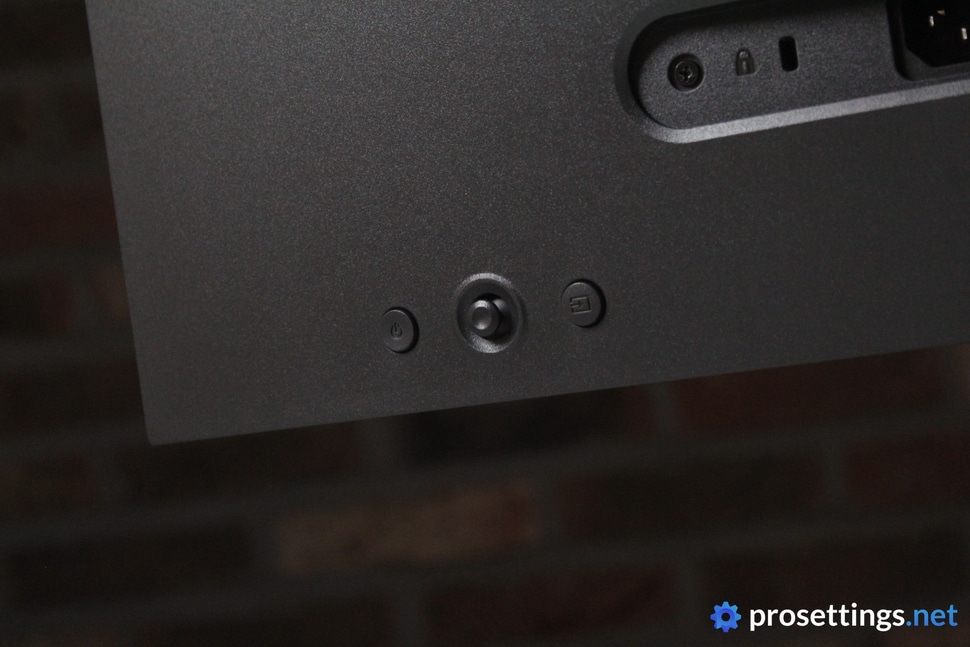
Build Quality and Adjustability
You can adjust the ZOWIE XL2586X+ in a variety of ways. You can rotate the stand, tilt the panel, and adjust the panel height. The panel itself can also be rotated, but you cannot twist it so far that it goes into portrait mode.
As I’ve said before, I really love ZOWIE’s stands. They’re reliable, operate smoothly, and keep the panel securely in place at all times.
All of the exterior parts are made out of plastic that’s dyed dark grey. That’s part of ZOWIE’s identity, but this retro-styled grey combined with the large bezels might make the XL2586X+ look a bit outdated to some people. I don’t mind the looks too much, but if you’re going for an ultra sleek monochrome setup, you may want to take note of this.
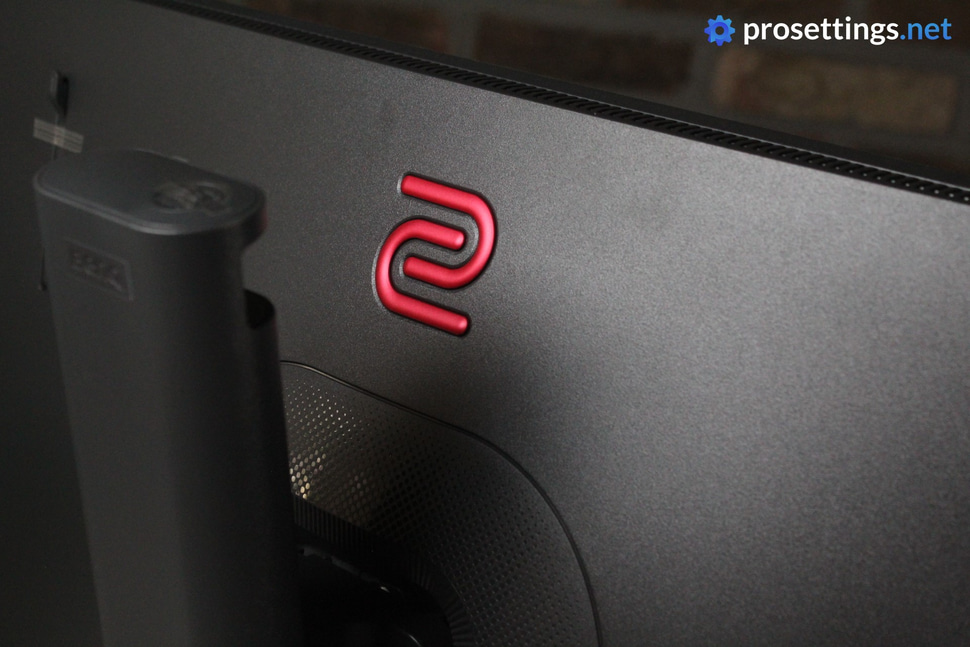
Image Quality and Settings
Picture Quality
The XL2586X+, like all ZOWIE XL monitors that have been released so far, uses a TN panel. And for a TN panel, this looks pretty great. The picture quality is nice and colors look good. Furthermore, the contrast is also very decent. Obviously, it doesn’t live up to good OLED panels, but that’s a TN panel limitation, not a fault of ZOWIE.
What I will say is that the viewing angles on the XL2586X+ are very limited, and panel uniformity also doesn’t seem to be the best. As long as you’re sitting directly in front of the panel, everything’s okay, but move out of the way even a bit and the picture starts to change. This is something that I already noted when I reviewed the XL2566X but it’s even more pronounced here.
Is the above a huge drawback? Not really, in my opinion. Again: this monitor is built for extremely dedicated competitive gamers, and those usually (there are exceptions: feel free to Google ‘jdm csgo’) sit right in front of their panel.
In any case: the picture quality is, for a TN panel, very good. It’s miles better than most TN options on the market, but I will say that I personally prefer the image quality of the XL2566X. To me, that’s the best-looking high-performance TN panel I’ve tried so far. The margins are small, but still.
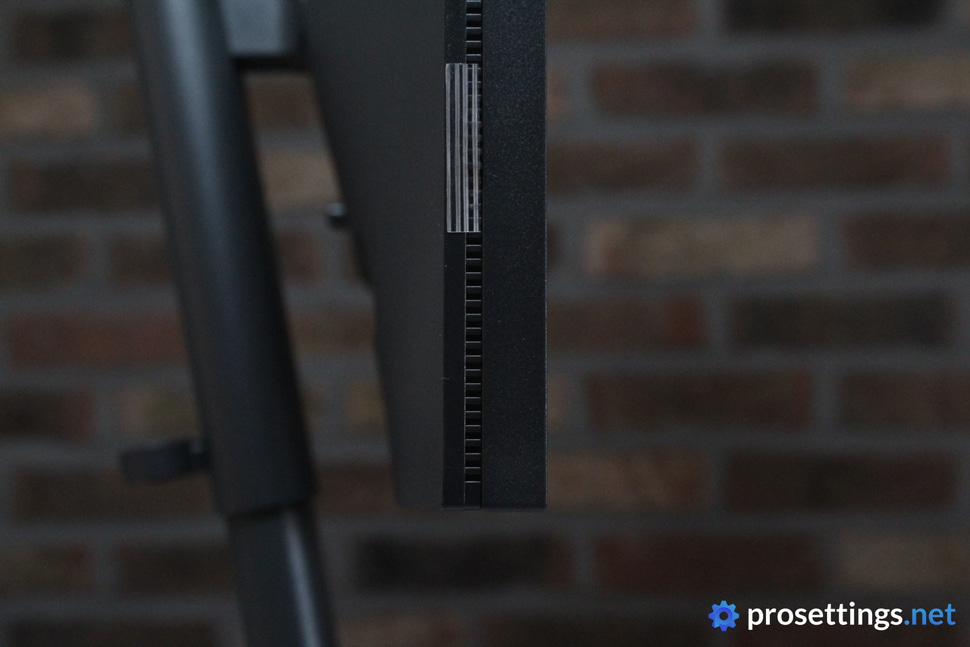
Settings
ZOWIE’s monitors have a ton of settings that you can configure to adjust the panel’s looks and performance. Configuring the monitor is very easy and can be done in two ways: via the included S-Switch or via the joystick at the back. Everything in the menus is laid out clearly and logically.
These settings are a topic of hot debate among enthusiasts, so they’re definitely worth configuring once you get the monitor.
Features like Black eQualizer and DyAc 2 can absolutely give you an edge in games, and are part of the reason why these monitors are so beloved in the pro scene. Furthermore, you can also do the usual stuff such as configuring the color vibrance, brightness, contrast, sharpness, and so on.
All of this adjustability results in wildly different setups depending on how you configure your settings. In case you have no idea where to begin, you can always use ZOWIE’s XL setting to share program to download the settings of other people. Alternatively, you can also browse our pro player lists and find the settings (if available) of your favorite player.
In any case: there are tons of customizable aspects to the panel. No matter what game you play, you’re going to be able to find a setup that matches how the game looks and feels. You can then save these settings on your monitor or the included S-Switch. The S-Switch can then be connected to a different monitor than your own, and it will automatically set up that monitor with your personal settings. Yet another small QoL feature that can make the lives of gamers a lot easier.
Performance
Gaming Performance
I can be short here: this is the best gaming monitor I’ve used so far. High refresh rates matter a lot, but the implementation of a panel can also absolutely make or break a monitor. To me, this is ZOWIE’s magnum opus.
With DyAc 2, I’m getting the smoothest and most responsive experience I’ve ever had on a monitor. Granted, I have a beefy PC and play at competitive settings in order to maximize my framerate, but even when the frames dropped I noticed how smooth this monitor is.
An obvious question here is: does it matter? The answer is ‘yes and no’.
If you’re coming from an older 144Hz monitor, for example, you will absolutely feel more confident when gaming. You’ll absolutely be hitting some shots that you wouldn’t have hit on your old panel as a consequence. As long as you’re not being bottlenecked by your PC (or your skills), this monitor is a clear upgrade over 144Hz and 240Hz monitors. DyAc 2 also feels great to use with this panel.
Things get a little blurrier (pun intended) when you’re coming from more high tier alternatives. Yes, there’s a (pretty clear) difference between this and a 360Hz monitor like the XL2566K but gameplay-wise, there are diminishing returns when upgrading to more responsive panels and higher refresh rates. The XL2586X+ feels incredibly smooth, but I don’t feel like I became a drastically better gamer on it when compared to my older ZOWIE monitors.
If I had to choose a monitor to play a high-stakes competitive tournament with, it would be this one though. It’s the smoothest and most responsive panel I’ve ever tested. If you’re a pro gamer, where every fraction of a percentage point of improvement counts, this is obviously worth the price of admission.
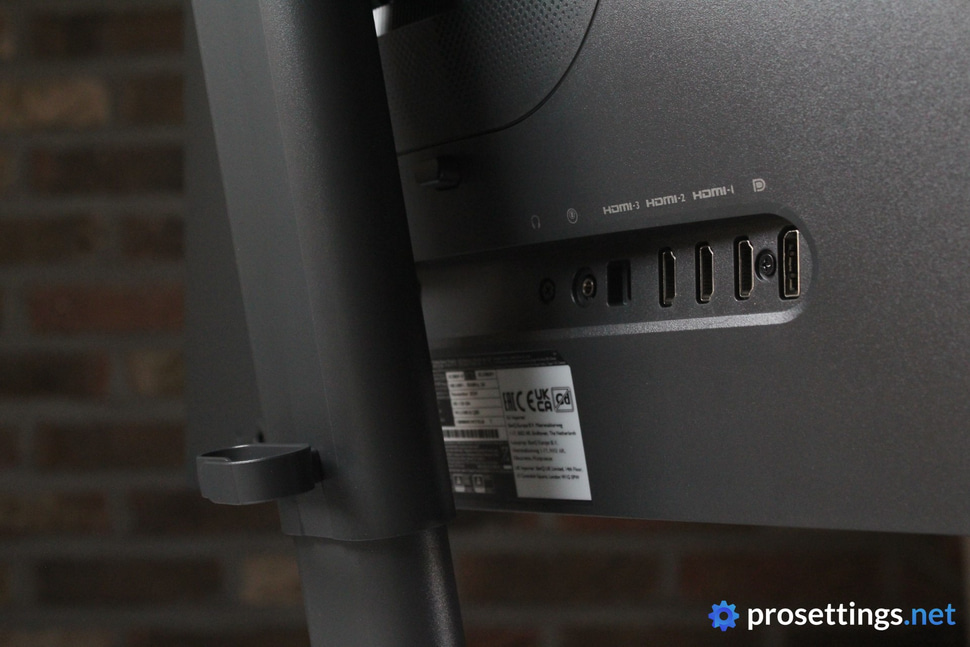
600Hz
Not too long ago, 360Hz monitors shocked people when they hit the market. Now, we’re looking at a 600Hz monitor. When I see these refresh rates, it does make me wonder—where does it end?
Not because I am against innovation: I love it when brands push boundaries, even if it’s ‘just’ about improving performance by 1 or 2%. However, here I can’t help but think that we’re almost at the endgame for TN panels. ZOWIE has proven time and time again that they’ve mastered the TN monitor.
And while it’s nice to see that they’re not resting on their laurels, I would love to see them tackle OLED and/or higher resolutions. Yes, I am aware that ZOWIE caters to hardcore competitive gamers, and that they overwhelmingly play at 1080p (or lower) in order to prioritize framerates, but I think a brand like ZOWIE can make a real dent in the gaming OLED market if they dedicate their expertise to that.
As it stands, this monitor is an impressive product, but extremely niche. At a price of over $1,000, the customer pool of people who want to pay that kind of money for a 1080p TN monitor is going to be extremely small.
With that said: ZOWIE does not forget their lower tier monitors. With the release of this 600Hz behemoth, they’ve also released upgraded versions of their XL2546 line, for example. So if you want DyAc 2 and all of the latest bells and whistles in a more modest monitor, you can go for those. Not all brands apply ‘flagship upgrades’ to their older/lower tier products, so it’s nice to see that ZOWIE does this.
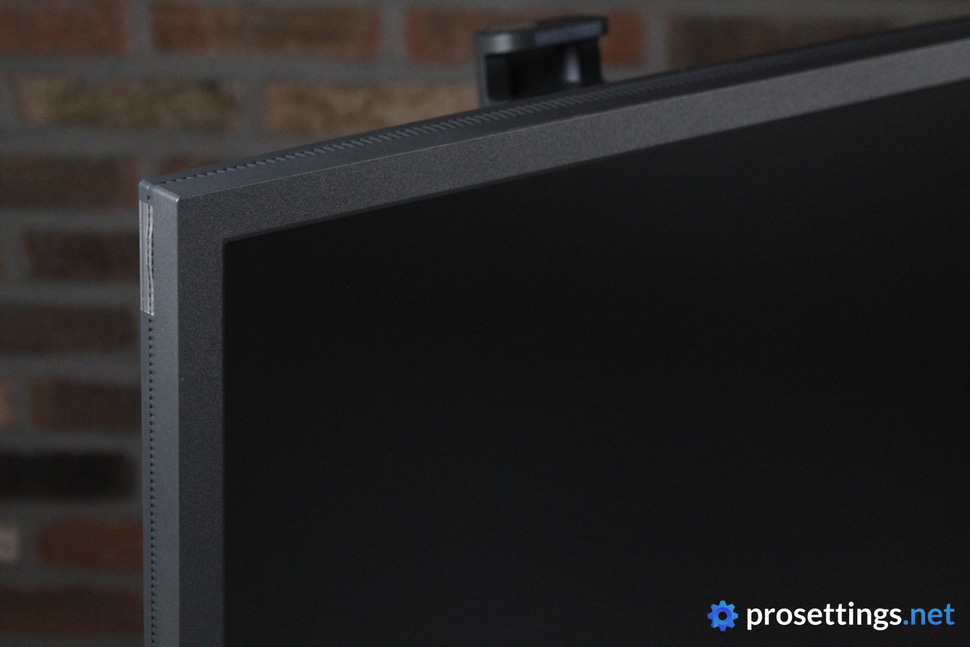
Everyday Performance
If you want a monitor that’s good for both gaming and productivity/browsing, skip this one. It’s decent for watching movies and the likes, but absolutely nothing more than that.
I used this monitor for work and casual use just fine, but if you’ve got $1,000 to spend and you want to go for a compromise type of monitor, there are tons of options out there that will do a lot more justice to your favorite streaming shows. For the money, you can even get your hands on an excellent 1440p OLED monitor that will come quite close to the XL2586X when it comes to gaming performances. Even ZOWIE’s own XL2566X performs better in non-gaming scenarios (to me) while coming extremely close when gaming.
But that’s just the draw of this monitor: it’s a product meant for gamers who want to squeeze out that last 1% of performance. Everyone else should steer clear of this and go for another (ZOWIE) monitor.
Conclusion
The ZOWIE XL2586X+ is a statement product. It doesn’t care about wide appeal. It’s built for one thing: pure, no-compromise competitive performance. And in that regard, it absolutely delivers. From the smooth DyAc 2 implementation to the absurd 600Hz refresh rate, this is the most responsive and fluid monitor I’ve tested to date.
Make no mistake though: this is a niche product. If you’re not grinding ranked in the highest ranks, playing in tournaments, or chasing every possible edge in your aim-heavy FPS of choice, you’re not going to get the full value out of this panel. It’s expensive, it’s 1080p, and it’s TN. It also costs over $1,000. As such, it’s an extremely specialized product that needs a state-of-the-art PC to drive it, as you won’t even get near 600 frames per second on mid or low tier PCs in most games.
But if you’re part of the hardcore target audience, none of that matters. What matters is that it’s faster, sharper in motion, and more dialed-in than anything else I’ve tried so far.
If you’re not a super sweaty competitive gamer, there are plenty of excellent monitors (some of them from ZOWIE) that offer a better all-round experience for less money. This is something you should only consider if you’re a very competitive gamer who’s aspiring to earn money with their gameplay or who’s already being paid to play. Everyone else should skip this.
Despite its niche appeal, the XL2586X+ is without a doubt an extremely impressive product. It’s a testament to how ZOWIE keeps pushing boundaries in this space. It’s going to be very interesting to see what the next step is in the monitor market, and I’m really looking forward to seeing how this part of the gaming world evolves.
This product was received for free from the manufacturer and given to our reviewer to test and review. Brands and manufacturers have no editorial control over our reviews. For more information, check out our review FAQ.


